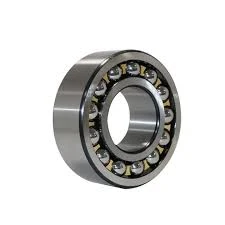
Nov . 19, 2024 18:23 Back to list
6205 ball bearing dimensions
Understanding the Dimensions of 6205 Ball Bearings
Ball bearings are essential components in a wide variety of mechanical systems, providing the necessary support and reducing friction between moving parts. Among the many types of ball bearings available, the 6205 ball bearing is a popular choice due to its versatility and effectiveness in numerous applications. This article will delve into the dimensions and specifications of the 6205 ball bearing, highlighting its significance in various industries.
What is a 6205 Ball Bearing?
The designation 6205 refers to a specific type of deep groove ball bearing that is commonly used in a variety of applications, including electric motors, automotive components, and household appliances. The 6205 ball bearing is characterized by its robust design, which enables it to operate efficiently under various operating conditions.
Dimensions of the 6205 Ball Bearing
The 6205 ball bearing has specific dimensions that define its structure and performance. The critical measurements for a standard 6205 ball bearing are as follows
- Inner Diameter (ID) 25 mm (0.98 inches) - Outer Diameter (OD) 52 mm (2.05 inches) - Width (W) 15 mm (0.59 inches)
These dimensions make the 6205 bearing suitable for both radial and axial loads while enabling smooth rotational movement. The deep groove design facilitates the bearing’s ability to accommodate radial loads, making it a popular choice for applications that involve both axial and radial forces.
Materials Used
Typically, 6205 ball bearings are constructed from high-quality materials to enhance durability and performance. The most common materials include
- Chrome Steel (GCr15) This is the standard material used for ball bearings, known for its high hardness and strength, making it ideal for heavy-load applications. - Stainless Steel (AISI 440C) For applications requiring corrosion resistance, stainless steel bearings are preferred. They withstand harsh environments, making them suitable for marine or chemical applications. - Ceramic In specialized applications, ceramic ball bearings may be used for their lightweight and high-speed capabilities, although they come with a higher price tag.
6205 ball bearing dimensions

Performance Characteristics
The performance of a 6205 ball bearing is defined by several parameters
- Load Ratings The dynamic load rating typically ranges from 5,700 N (1,280 lb) to 8,000 N (1,800 lb), while the static load rating can vary accordingly. This indicates the bearing’s ability to support external loads without deforming. - Speed Ratings Depending on the specific design and lubrication, 6205 bearings can support speeds up to 17,000 RPM (revolutions per minute) in certain applications. - Operating Temperature The standard operating temperature range for 6205 ball bearings is between -30°C to +120°C (-22°F to +248°F). Bearings made of special materials can withstand higher temperatures.
Applications of 6205 Ball Bearings
The versatility of the 6205 ball bearing makes it suitable for a diverse range of applications
1. Electric Motors Used in both AC and DC motors, 6205 bearings support the rotor and help reduce friction to enhance efficiency. 2. Automotive Industry In automotive applications, these bearings can be found in wheel hubs, transmission systems, and other rotating components.
3. Industrial Machinery Many types of industrial equipment, such as conveyors and pumps, rely on 6205 ball bearings for reliable performance and longevity.
4. Household Appliances Common household devices like washing machines, fans, and refrigeration units often use 6205 bearings to minimize wear and enhance performance.
Conclusion
The 6205 ball bearing is a fundamental component across various industries, providing reliable performance and adaptability to different environments. Understanding its dimensions and characteristics is crucial for engineers and designers when selecting the appropriate bearing for a given application. Whether in high-speed machinery, automotive systems, or everyday appliances, the 6205 ball bearing continues to play a vital role in modern technology. By choosing the right materials and configurations, manufacturers can ensure optimal performance, longevity, and efficiency in their products.
Latest news
-
Premium Deep Groove Ball Bearings | High Speed & Reliability
NewsAug.29,2025
-
Durable Scaffolding Clamps - Secure & Reliable Tube Connectors
NewsAug.28,2025
-
Common Failures in Thrust Ball Bearings and Solutions
NewsAug.22,2025
-
How Tapered Roller Bearings Can Take Shock Loads
NewsAug.22,2025
-
Angular Bearings in High-Precision Spindles
NewsAug.22,2025
-
The Impact of Misalignment on Cylindrical Roller Bearing Performance
NewsAug.22,2025
